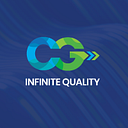Computer System Validation (vs) Computer Software Assurance
Computer System Validation (CSV) and Computer Software Assurance (CSA) are two distinct processes in the realm of software and computer system quality assurance and compliance. They have different goals and approaches, but both are essential for ensuring the reliability, integrity, and regulatory compliance of software and computer systems, especially in industries like pharmaceuticals, healthcare, and finance.
1. Computer System Validation (CSV):
- Goal: CSV is primarily concerned with ensuring that a computer system, including both hardware and software components, meets its intended purpose and complies with regulatory requirements.
- Scope: It encompasses the entire computer system, including hardware, software, infrastructure, and documentation.
- Phases: CSV typically involves multiple phases, including planning, requirements specification, design, testing, installation, operation, and maintenance.
- Documentation: Extensive documentation is a key aspect of CSV. This includes validation plans, user requirements, design specifications, test protocols, and validation reports.
- Regulatory Compliance: CSV is essential in regulated industries such as pharmaceuticals, where adherence to regulations like FDA’s 21 CFR Part 11 is mandatory.
- Risk-Based Approach: CSV often employs a risk-based approach to prioritize and focus validation efforts on critical aspects of the system.
2. Computer Software Assurance (CSA):
- Goal: CSA focuses primarily on ensuring the quality and reliability of the software component within a computer system.
- Scope: CSA is primarily concerned with the software and its development processes.
- Phases: It typically includes activities like software development, testing, and maintenance.
- Documentation: While documentation is important in CSA, it may not be as extensive as in CSV. Key documents include software requirements, design specifications, test plans, and defect reports.
- Regulatory Compliance: CSA may also be subject to regulatory compliance requirements, but its primary focus is on the software’s functionality, performance, and security.
- Quality Assurance: CSA emphasizes quality assurance measures throughout the software development life cycle, including code reviews, testing, and quality control processes.
In summary, while both CSV and CSA are critical for ensuring the reliability and compliance of computer systems, CSV has a broader scope, encompassing the entire computer system, while CSA is specifically concerned with the software component. Both processes are essential for industries with strict regulatory requirements to ensure that computer systems and software meet their intended purposes and comply with applicable regulations.
Source: CSV (vs) CSA
